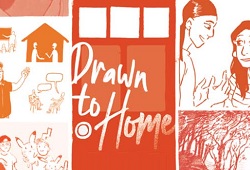
Homelessness in the United States is not something new. The rapid influx of immigrants during the late nineteenth century into New York and other large cities resulted in many being unable to find jobs or shelter. The Great Depression of the 1930s aggravated the situation, while the transformation of the nation’s economy from industrial to technological saw a rise in both unemployment and the homeless. In more contemporary times, the lack of affordable housing coupled with low paying jobs and an often-inadequate support system has led to homelessness becoming an even greater concern in the twenty-first century.
An estimated 500,000 people living in the United States are homeless. Homelessness, however, is about more than just numbers and statistics. It’s about actual people, and any effort to confront the issue needs to recognize that fact.
“Wicked problems like homelessness will not be solved by any of the science or policy schemes of the high, hard ground upon which we too often stake our claim,” University of Washington professor Josephine Ensign writes in her 2021 book Skid Road: On the Frontier of Health and Homelessness in an American City. “Wicked problems like homelessness are best approached by being willing to enter the swamp, to value the role of stories, of a multiplicity of stories, and to nurture the capacity to listen to – and for – them. We must especially listen to the quieter voices telling their stories, even mere fragments of stories.”
Jay Poliziani, who served as executive director of Northside Common Ministries in Pittsburgh, Pennsylvania, was a true believer when it came to helping the homeless and listening to their stories. In 2018, he co-curated a multimedia exhibit called Walk On By that featured eleven local artists who met with the homeless of the region and then crafted their stories into artwork.
“The message they are hoping to convey is that through interaction with our brothers and sisters experiencing homelessness, we can open a wider dialogue which hopefully will lead to real concrete efforts to end homelessness in our area,” Poliziani told The Pitt News of the artists involved.
Photographer Jen Saffron concurred. For Walk On By, she snapped twelve black-and-white portraits at a homeless shelter but had conversations with each of them before taking the photos. “These are not anonymous folks,” Saffron explained. “They are people with stories and ideas of their own, despite their current situations.”
Carnegie Mellon University art student Daniel See took a different approach for his contribution to Walk On By. “I went around Pittsburgh speaking to different people experiencing homelessness from shelters and on the streets,” he told Pittsburgh radio station WESA. “I brought them slabs of clay, they formed a cylinder out of them and then used their hands to put a hand print on them.”
Afterwards, See crafted the cylinders into mugs that were both put on display and offered for sale at the exhibit. “When they’re holding the cups and drinking from them, their hands inevitably connect with the hands of the homeless people on the streets,” he said of those who purchased the mugs. “That tries to bridge the gap and barriers between these two groups of people.”
While Walk On By was making the rounds of various libraries and art galleries in the Pittsburgh area, Jay Poliziani was already at work on his next project to raise awareness of the homeless in the region – an anthology comic book entitled Drawn to Home. The idea originated with Peter Harvey, community resources specialist for the Allegheny County Department of Human Services, who read about a similar project in France.
“Jay is always open to exploring new ways to educate the community on issues of housing and the homeless,” he told the Pittsburgh Post-Gazette.
Drawn to Home paired nine individuals who had experienced homelessness at some point in their lives with ten local comic book artists who listened to their stories and then crafted them into short three-to-four-page narratives. The stories included a trans teenager who had difficulty finding their place in the world, a former homeless man who became an advocate for the homeless until his untimely death in 2019, an adult male who suffered from mental health issues, and a seventy-year-old woman whose financial struggles led to her living on the streets for long periods of time throughout her life.
Just like with Walk On By, the original artwork from Drawn to Home was transformed into a traveling exhibit in the Pittsburgh area. “We have seen firsthand the power art has to open up tough conversations through a project called Walk On By,” Jay Poliziani explained on the Drawn to Home Kickstarter page. “The project has traveled for one-month intervals to library art gallery spaces throughout the county for nearly three years. We have seen that people are open to conversations about tough topics like homelessness when presented in a non-confrontational or judgmental way. When people can start the conversation organically around a work of art, they feel at ease. Change can only come if conversations feel comfortable.”
Jay Poliziani passed away on July 2, 2022, after spending the majority of his life as a passionate advocate for the homeless and strong believer in listening to their voices. By embracing art as a medium – from photographs to clay mugs to comic books – his efforts to tell their stories helped raise awareness in unconventional ways. As a result, his legacy lives on.
Anthony Letizia

